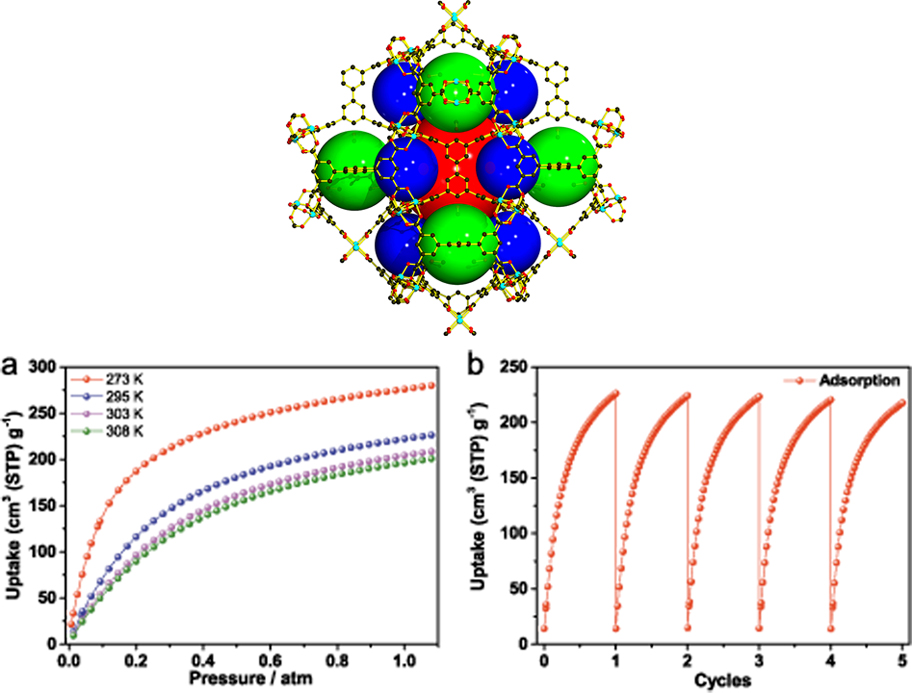Acetylene is a very important chemical feedstock for modern industry. Many widely used polymer products such as polyurethane and polyester plastics are synthesized from acetylene. However, the safe storage and transportation of acetylene still remain challenging because of its explosiveness when compressed under pressures over 2 atm at room temperature.
Recent studies led by Prof. HONG Maochun and Prof. YUAN Daqiang from Fujian Institute of Research on the Structure of Matter obtained a stable porous MOF material named FJI-H8, with both suitable pore space and rich open metal sites, for efficient storage of acetylene under ambient conditions.

Combination of the three types of polyhedral nanocages. C2H2 adsorption isotherms of FJI-H8 at 273, 295, 303 and 308 K. Cycles of C2H2 adsorption for FJI-H8 at 295 K.(Image by Prof. YUAN’s Group)
There are three types of polyhedral nanocages in FJI-H8, that is, one regular cuboctahedron, one distorted octahedron and one distorted cuboctahedron. The BET apparent surface area calculated from the N2 adsorption data is 2025 m2 g-1. Accordingly, the total pore volume is 0.82 cm3 g-1. From the N2 adsorption data, analysis by the non-local density functional theory (NLDFT) model confirms a narrow distribution of micropores around 1.2 nm.
Compared with existing reports, FJI-H8 shows a record-high gravimetric acetylene uptake of 224 cm3 g-1 and the second-highest volumetric uptake of 196 cm3 g-1 at 295 K and 1 atm. Increasing the storage temperature to 308 K has only a small effect on its acetylene storage capacity (~200 cm3 g-1). Grand canonical Monte Carlo simulation reveals that not only open metal sites but also the suitable pore space and geometry play key roles in its remarkable acetylene uptake.
The study entitled “A porous metal-organic framework with ultrahigh acetylene uptake capacity under ambient conditions” has been published online in Nature Communication.
Contact:
Prof. YUAN Daqiang
State Key Laboratory of Structural Chemistry
Fujian Institute of Research on the Structure of Matter
Chinese Academy of Sciences, Fuzhou, Fujian 350002, China.
E-mail: ydq@fjirsm.ac.cn